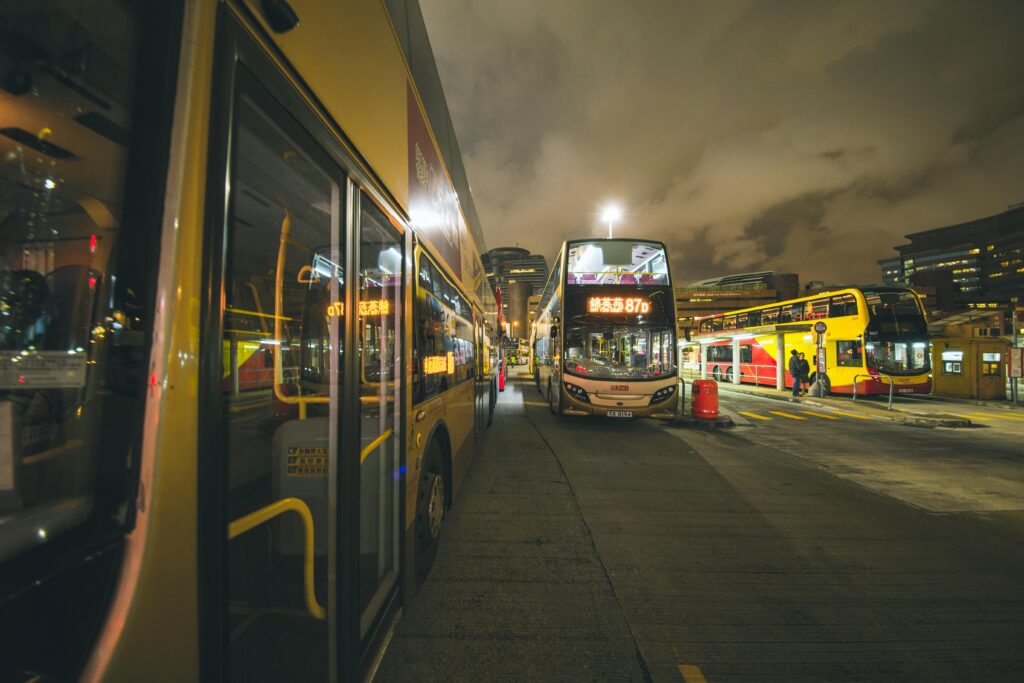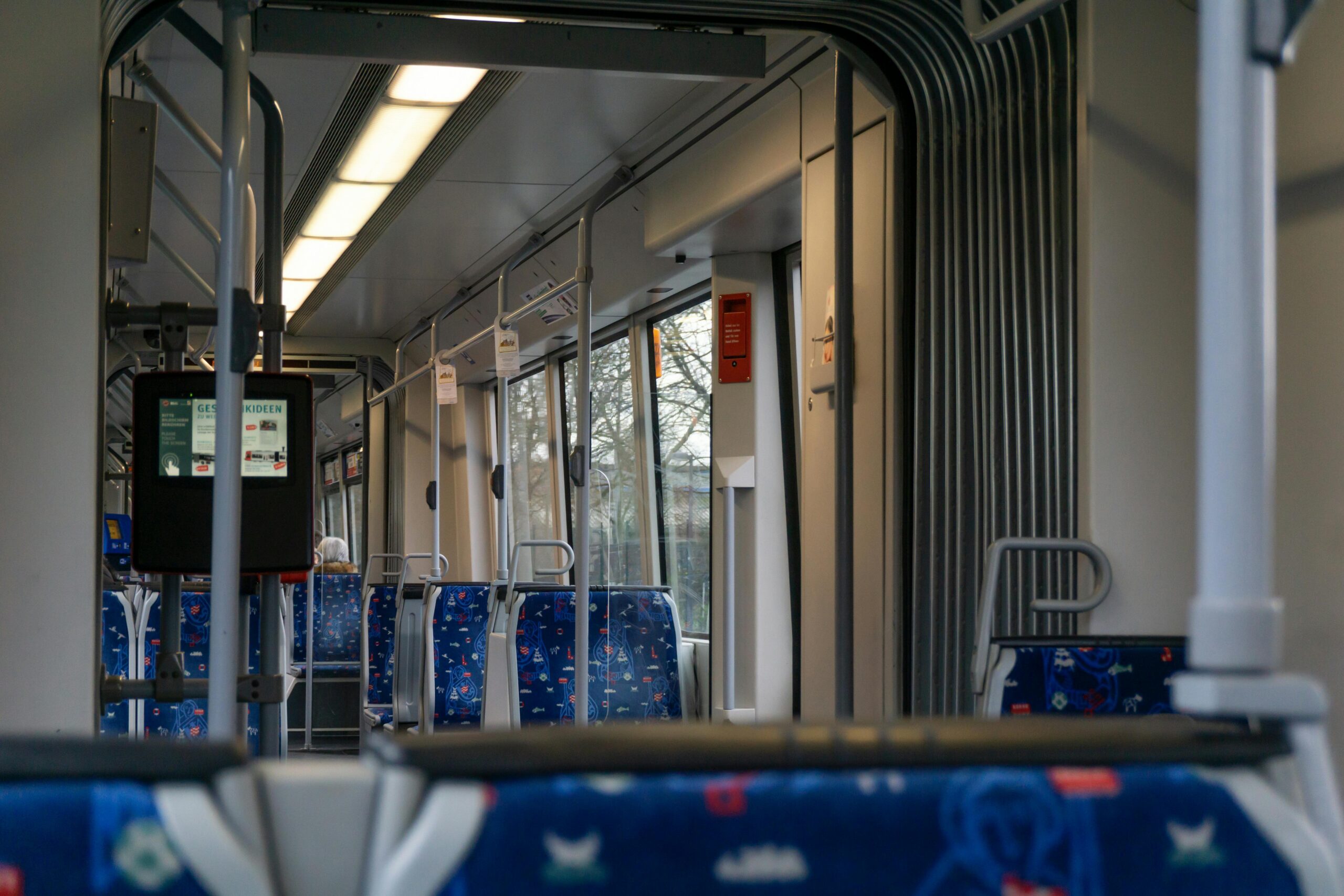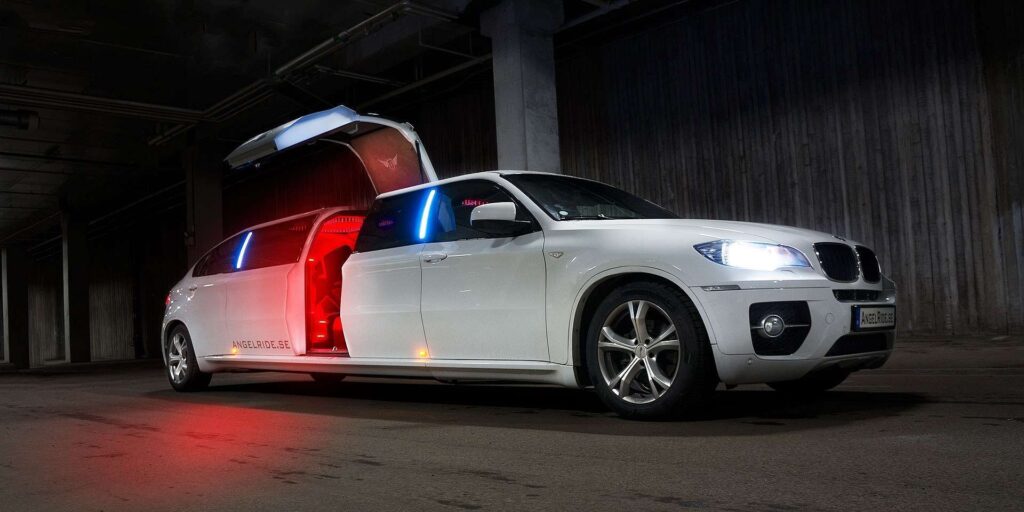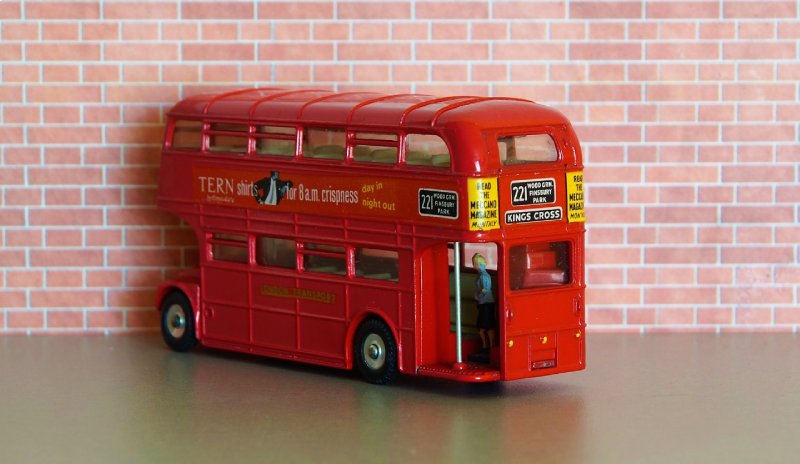Imagine this: You’re running late for work, sprinting to catch the bus, only to find the designated stop overflowing with delivery trucks. This frustrating scenario, unfortunately, is a reality for many bus riders. But the problem goes beyond passenger inconvenience. A 2023 study by the American Public Transportation Association (APTA) revealed that bus drivers spend an average of 2.5 hours per week searching for suitable parking. This wasted time translates to delayed schedules, frustrated riders, and ultimately, a less efficient public transportation system.
Bus parking, though often overlooked, plays a crucial role in the smooth operation of public transit. It ensures timely arrivals and departures, creates safe boarding/disembarking zones for passengers, and provides a dedicated space for buses to layover during breaks. Let’s delve deeper into the different types of bus parking and explore solutions for overcoming the challenges they present.
The Three Pillars of Bus Parking:
On-Street Bus Parking: This is the most common type, offering convenient access for passengers. Designated bus stops with clear markings and signage allow for quick boarding and disembarking. However, on-street parking can be a double-edged sword. While convenient, it’s often limited in availability, especially in crowded urban areas. Parked cars or illegal double-parking can easily disrupt traffic flow, causing delays for both buses and regular vehicles. Additionally, on-street bus stops can pose safety concerns for cyclists and pedestrians navigating busy streets.
Off-Street Bus Parking: Offering a dedicated space for buses, off-street parking eliminates the competition for curb space and reduces traffic congestion. Bus depots and park-and-ride facilities are prime examples. These facilities often have amenities like restrooms and break areas for drivers, contributing to improved working conditions and overall driver morale. While advantageous, off-street parking requires land acquisition and construction, making it a less viable option in areas with limited space or high land costs.
Bus Terminals: These bustling hubs act as central locations for multiple bus routes. Passengers can easily transfer between lines, access ticketing booths, and often find amenities like waiting areas and restrooms. Bus terminals connect seamlessly with other transportation systems like subways or trains, offering a convenient multi-modal travel experience. However, building and maintaining these terminals can be expensive, and some passengers might experience longer travel times if their destination isn’t directly served by the terminal.
The Parking Struggle is Real:
Despite the various types of bus parking available, several challenges persist. Limited space in urban areas puts a premium on every square foot, making dedicated off-street parking a constant battle. Balancing the needs of buses with those of other vehicles and pedestrians requires creative solutions like designated bus lanes and improved signage. Safety remains a top concern, especially for passengers boarding and disembarking in busy areas with high traffic volumes. Finally, managing the efficient flow of bus traffic, particularly during peak hours, requires innovative approaches.
Charting a Course for Improvement:
Thankfully, advancements in technology and infrastructure development offer promising solutions. Smart parking systems can provide real-time information on available parking spaces, reducing wasted time for drivers. Automated ticketing systems can improve efficiency and streamline passenger boarding. Dedicated bus lanes with clear markings and enforcement can significantly improve travel times and reduce overall congestion. Upgrading infrastructure with improved signage, designated bus bays, and well-maintained bus stops sends a clear message that public transportation is valued.
A Collaborative Effort for a Sustainable Future:
Public education campaigns promoting bus lane etiquette and encouraging ridership can further incentivize the use of public transportation. Collaboration between transportation authorities and urban planners is key to developing a comprehensive approach to bus parking. As cities strive for sustainability, integrating electric vehicle charging infrastructure into bus parking facilities can support the transition to cleaner transportation options. The future of bus parking might even involve autonomous bus technology, potentially altering parking needs altogether. Sustainable design considerations, like green roofs and rainwater harvesting systems applied to bus terminals, can further minimize environmental impact.
The Final Stop: A Future-Proof Public Transport System
Efficient bus parking is not a luxury but a necessity. By recognizing its importance and implementing the solutions discussed above, we can create a public transportation system that is efficient, safe, and environmentally friendly. Investing in bus parking paves the way for a smoother, more reliable, and ultimately, more attractive public transport option for everyone. Let’s work together to ensure bus parking takes its rightful place as the unsung hero of a thriving public transportation system.
Urban Caffeine
Bus Parking: The Backbone of Efficient Public Transportation
Imagine a bustling city street. Cars whiz by, horns honk, and frustration mounts as a bus desperately searches for a place to pull over. This scenario, unfortunately, plays out daily in many urban areas, highlighting the often-overlooked yet crucial role of bus parking in the smooth operation of public transportation. Unlike private vehicles, buses require designated spaces for loading and unloading passengers, layovers during breaks, and overnight storage. Let’s delve into the various types of bus parking, exploring their advantages, disadvantages, and innovative solutions to address ongoing challenges.
The Three Pillars of Bus Parking:
A. On-Street Bus Parking:
This familiar sight – marked curbside locations with designated signage – offers a readily accessible solution for passengers. Benefits include:
Convenience for Passengers: On-street stops provide easy access, particularly in densely populated areas where walking distances to dedicated facilities might be a deterrent for ridership.
Reduced Reliance on Dedicated Facilities: On-street parking utilizes existing infrastructure, minimizing the need for additional construction projects.
However, on-street parking comes with its own set of challenges:
Limited Availability: Competition for curb space from parked cars and double-parking can significantly limit availability, leading to delays and frustration for both bus drivers and passengers.
Traffic Disruption: Buses stopping frequently to pick up and drop off passengers can disrupt traffic flow, impacting not only public transportation schedules but also overall traffic congestion.
Safety Concerns: Passengers boarding and disembarking in busy traffic lanes can face safety risks, especially for cyclists and pedestrians navigating the same space.
Strategies for Improvement:
Dedicated Bus Lanes: Separating bus lanes from regular traffic flow ensures a dedicated space for buses to travel unimpeded, minimizing delays and disruptions.
Bus Bulbs: These curbside extensions create a designated platform for easier and safer passenger boarding and disembarking, reducing dwell time at stops.
B. Off-Street Bus Parking:
Moving away from the curb, off-street bus parking offers a dedicated space for buses, addressing many of the challenges associated with on-street solutions. Benefits include:
Dedicated Space for Buses: Off-street facilities eliminate the competition for curb space, ensuring buses can arrive, load/unload passengers, and layover without impacting traffic flow.
Reduced Traffic Congestion: By removing buses from the general traffic flow, off-street parking contributes to smoother traffic movement and reduced overall congestion.
Amenities for Drivers: Depots and other off-street facilities can offer restrooms, break areas, and other amenities for drivers, improving working conditions and morale.
Despite its advantages, off-street parking isn’t without its drawbacks:
Land Acquisition and Construction Costs: Developing dedicated off-street facilities requires land acquisition and construction, which can be expensive and challenging in areas with limited space.
Feasibility: Off-street solutions might not be a viable option for all areas, particularly dense urban environments where land costs are high.
Examples of Off-Street Bus Parking:
Bus Depots: These centralized facilities serve as hubs for bus storage, maintenance, and driver operations. They often include off-street parking for buses not currently in service.
Park-and-Ride Facilities: Combining parking spaces for private vehicles with dedicated bus stops, these facilities encourage commuters to park their cars and utilize public transportation for the final leg of their journey.
C. Bus Terminals:
At the heart of a city’s public transportation network lie bus terminals, bustling hubs that connect passengers across various routes. Here’s why they are crucial:
Centralized Hub for Bus Routes: Terminals act as central points where passengers can transfer between different routes, maximizing network efficiency and accessibility.
Passenger Amenities: Terminals typically offer amenities like waiting areas, ticketing booths, restrooms, and sometimes even retail outlets, enhancing the passenger experience.
Connectivity with Other Systems: Many terminals seamlessly integrate with other public transportation systems like subways, trains, or light rail, providing convenient multi-modal travel options.
However, bus terminals also have limitations:
Construction and Maintenance Costs: Building and maintaining large terminals can be an expensive undertaking, requiring significant ongoing investment from public or private entities.
Longer Travel Times: For passengers whose destinations aren’t directly served by the terminal, reaching their final stop might involve transferring and potentially longer travel times.
The Future of Bus Parking: Innovation and Collaboration
The challenges associated with bus parking demand innovative solutions. Here’s what’s on the horizon:
Smart Parking Systems: Real-time information on available parking spaces, provided by app-based or sensor-driven systems, can significantly reduce wasted time for drivers searching for a spot.

Bus Parking: Navigating the Challenges for a Smoother Ride
The rumble of an approaching bus can be a lifeline in a bustling city, offering a quick and affordable escape from traffic jams. But behind the scenes, a less-than-glamorous battle often unfolds – the fight for a suitable parking space. Unlike private vehicles, buses require designated areas for crucial functions: picking up and dropping off passengers, layovers during breaks, and overnight storage. However, securing efficient bus parking presents a multitude of challenges, impacting both the effectiveness of public transportation and the overall urban environment.
The Squeeze is On: Limited Space in Urban Areas
Densely populated urban centers are where public transportation thrives. Yet, this very density creates the first hurdle in bus parking – limited space. Competition for curb space from parked cars and double-parking becomes fierce. Imagine a bus driver desperately searching for a spot during rush hour, only to find every available curb occupied. This scenario not only delays passenger arrivals but also disrupts overall traffic flow, creating a domino effect of congestion.
A Delicate Balancing Act: Buses vs. Other Vehicles and Pedestrians
The struggle doesn’t end with parked cars. Buses share the road with a mix of vehicles and pedestrians, creating a delicate balancing act. Frequent stops for passenger boarding and disembarking disrupt the flow of traffic, leading to frustration for drivers stuck behind a stopped bus. Meanwhile, pedestrians navigating busy streets alongside large buses face safety concerns, especially in areas with limited designated stopping zones.
Safety First: Protecting Passengers at Bus Stops
Passenger safety is paramount. Unfortunately, the current state of on-street bus parking often compromises this principle. Passengers are forced to board and disembark directly from traffic lanes, leaving them vulnerable to accidents. This risk is particularly high for vulnerable groups like children, elderly individuals, and those with disabilities.
Peak Hour Blues: Managing Bus Traffic Flow Efficiently
Morning and evening commutes paint a vivid picture of another bus parking challenge – managing bus traffic flow efficiently. During peak hours, the number of buses on the road increases significantly. Without dedicated spaces for layovers or temporary holding areas, buses end up clogging traffic lanes while waiting for their turn at designated stops. This disrupts not only the flow of public transportation but also adds to the overall traffic congestion in the city.
Charting a Course for Improvement: Solutions on the Horizon
These challenges paint a complex picture, but there are solutions on the horizon. Here’s how we can navigate these hurdles and ensure a smoother ride for both bus drivers and passengers:
Prioritizing Dedicated Bus Lanes: Separating bus lanes from regular traffic provides dedicated space for buses to travel unimpeded, minimizing delays and disruptions. This prioritizes public transportation, ensuring buses adhere to their schedules and improve overall network efficiency.
Embracing Innovative Infrastructure: Bus bulbs, curbside extensions that create designated platforms for boarding and disembarking, contribute to passenger safety and faster dwell times at stops. These extensions create a physical separation between pedestrians and moving traffic, significantly reducing safety concerns.
Leveraging Technology for Smart Parking: Imagine app-based or sensor-driven systems that provide real-time information on available parking spaces for buses. This futuristic concept, already being piloted in some cities, can significantly reduce wasted time for drivers searching for a spot, leading to improved efficiency for the entire bus network.
Promoting a Culture of Shared Responsibility: Raising public awareness about the importance of bus lanes and responsible parking habits can make a significant impact. Encouraging shorter dwell times by passengers at bus stops and stricter enforcement of illegal parking in designated bus zones can contribute to a smoother flow of traffic.
Investing in Off-Street Facilities: While space constraints might limit the feasibility of off-street parking in all areas, strategically placed depots and park-and-ride facilities can offer numerous benefits. Dedicated off-street areas provide secure spaces for buses during downtime, reducing competition for curb space and improving traffic flow on city streets. Additionally, park-and-ride facilities encourage carpooling and public transportation use, further decreasing congestion and environmental impact.
Building a Collaborative Future
Addressing the challenges of bus parking requires a collaborative effort. City planners, transportation authorities, and the public all have a role to play. By prioritizing dedicated bus lanes, investing in innovative infrastructure, and embracing smart technologies, we can create a more efficient public transportation system. Simultaneously, fostering responsible public behavior and investing in off-street facilities where feasible will further improve the flow of traffic and enhance safety for all.
A Smooth Ride for All: The Benefits of Efficient Bus Parking
The benefits of tackling bus parking challenges extend far beyond passenger convenience. Efficient bus parking contributes to:
Reduced Traffic Congestion: By minimizing disruptions caused by searching for parking and frequent stops, a well-managed system allows for smoother traffic flow.

Bus Parking: From Frustration to Flow – Solutions for a Thriving Public Transportation System
Imagine a symphony – each instrument playing its part in creating a harmonious whole. That’s how a well-functioning public transportation system should operate. Buses, the workhorses of this system, rely on efficient parking to maintain their rhythm. But the reality often falls short, with buses battling for curb space and causing traffic jams. Fortunately, technological advancements, infrastructure development, and a collaborative approach offer solutions to transform this frustration into a smooth flow.
Embracing Technology: Smart Parking for a Smarter System
The digital revolution is transforming every facet of our lives, and bus parking is no exception. Here’s how technology is paving the way for a more efficient system:
Smart Parking Systems: Imagine a system that guides bus drivers to available parking spaces in real-time. This futuristic vision is already becoming reality. Sensor-driven or app-based solutions provide real-time information on parking availability, reducing wasted time spent searching for a spot. This translates to shorter travel times, improved schedule adherence, and ultimately, a more reliable public transportation experience.
Automated Ticketing: Long queues and fumbling for change can create delays at bus stops. Automated ticketing systems, where passengers can pay fares electronically using cards or mobile apps, streamline the process. This not only reduces dwell times at stops but also improves overall efficiency and passenger convenience.
Infrastructure Matters: Building a Foundation for Smooth Operations
Technology is a powerful tool, but it needs a solid foundation – well-developed infrastructure. Here’s how infrastructure improvements can enhance bus parking:
Dedicated Bus Lanes: Separating bus lanes from regular traffic is a game-changer. Buses travel unimpeded, minimizing delays and disruptions caused by frequent stops and merging into traffic lanes. Dedicated lanes showcase a city’s commitment to public transportation, potentially leading to increased ridership and a reduction in car traffic.
Improved Signage and Markings: Clear and visible signage and road markings are essential for both bus drivers and other road users. These visual cues guide drivers to designated bus stops and parking areas, reducing confusion and promoting adherence to traffic regulations.
Designated Bus Bays: Curbside extensions, also known as bus bulbs, create dedicated platforms for passenger boarding and disembarking. This not only improves efficiency but also enhances safety by separating pedestrians from moving traffic.
Changing Behavior Through Education: Promoting a Culture of Shared Responsibility
Technology and infrastructure are crucial, but the human element plays a vital role. Public education campaigns can significantly impact bus parking efficiency:
Raising Awareness of Bus Lane Etiquette: Educating drivers about proper etiquette in dedicated bus lanes is vital. This includes respecting bus lane restrictions, maintaining a safe distance from buses, and avoiding lane changes that impede bus traffic flow.
Encouraging Ridership: The more people who utilize public transportation, the less strain there is on parking resources. Public education campaigns highlighting the benefits of public transportation, such as reduced environmental impact and cost-effectiveness, can incentivize a shift towards greener and more efficient travel options.
Collaboration is Key: Working Together for a Sustainable Future
Addressing the challenges of bus parking requires a collaborative effort. Here’s how different stakeholders can work together:
Transportation Authorities and Urban Planners: Strong collaboration between these two entities is crucial. Transportation authorities provide data and insights on ridership patterns and parking needs, while urban planners utilize this information to design and implement infrastructure solutions, including dedicated bus lanes and off-street facilities.
Public Engagement: Involving the public in discussions about public transportation improvements fosters a sense of ownership and accountability. Public forums can be used to address concerns, gather feedback on proposed solutions, and encourage a collective effort to create a more efficient and sustainable transportation system.
The Road Ahead: A Thriving Public Transportation Ecosystem
Investing in solutions for bus parking challenges has a ripple effect. By embracing technology, prioritizing infrastructure development, promoting responsible public behavior, and fostering strong collaboration, we can create a thriving public transportation ecosystem with numerous benefits:
Reduced Traffic Congestion: Efficient bus parking contributes to a smoother flow of traffic, particularly in urban areas. Buses navigate dedicated lanes with minimal disruptions, leading to shorter travel times for everyone.
Improved Air Quality: With fewer cars on the road due to increased public transportation use, overall emissions are reduced, leading to cleaner air and a healthier environment.
Sustainable City Development: Public transportation plays a vital role in sustainable urban development. By prioritizing bus parking solutions, cities can attract residents and businesses seeking eco-friendly and affordable transportation options.
The Final Stop: A Future with Efficient and Sustainable Bus Parking
Bus parking is often the unsung hero of a well-functioning public transportation system. By implementing the solutions discussed above, we can transform this often-overlooked aspect into a powerful tool for creating a smoother.
Bus Parking: Gearing Up for the Future of Public Transportation
The rumble of a bus approaching a stop can evoke a sense of relief for weary commuters, offering a reprieve from traffic jams and a convenient way to navigate the urban landscape. But behind the scenes, a less glamorous battle often unfolds – the fight for a suitable parking space. Bus parking, though crucial for a smooth-functioning public transportation system, faces numerous challenges. However, the future holds exciting possibilities, with advancements in technology, design, and vehicle types paving the way for a more efficient and sustainable approach to bus parking.
Powering Up: Integration with Electric Vehicle Charging Infrastructure
The transition to electric vehicles (EVs) is rapidly transforming the transportation landscape, and buses are no exception. Integrating electric vehicle charging infrastructure into bus parking facilities offers several benefits:
Reduced Emissions and Cleaner Cities: Electric buses generate zero tailpipe emissions, significantly contributing to cleaner air and a healthier environment, particularly in urban areas with high pollution levels.
Lower Operating Costs: Electric buses offer lower operating costs compared to traditional diesel-powered models, thanks to reduced fuel expenses. This can lead to significant savings for transportation authorities and ultimately translate to more resources invested in improving public transportation services.
Strategic Charging Opportunities: Bus parking facilities present a unique opportunity for strategic charging. During layovers or overnight storage, buses can be plugged into charging stations, ensuring they have enough power to complete their routes efficiently.
The Rise of the Machines: Autonomous Bus Technology and Parking Needs
The concept of self-driving cars has captured public imagination, but the future of autonomous vehicles might start with buses. Autonomous bus technology, though still in its early stages, has the potential to revolutionize bus parking:
Optimized Parking Efficiency: Autonomous buses could communicate with each other and coordinate parking maneuvers, maximizing space utilization and minimizing wasted time searching for spots.
Reduced Need for Dedicated Infrastructure: With autonomous operation, buses could potentially park more efficiently in existing spaces, reducing the need for extensive infrastructure development for dedicated bus bays.
Precision Docking: Autonomous systems could ensure buses park with pinpoint accuracy, creating a safer and more efficient environment for passenger boarding and disembarking.
However, the impact of autonomous buses on parking needs is still uncertain. While efficiency might improve, additional space might be required for maintenance and charging infrastructure dedicated to self-driving buses.
Building Green: Sustainable Design Considerations
Public transportation plays a vital role in promoting sustainability. When designing bus parking facilities, incorporating eco-friendly elements can further minimize environmental impact:
Green Roofs: These roofs are covered with vegetation, offering numerous benefits. They can insulate buildings, reduce stormwater runoff, and even create habitats for beneficial insects.
Rainwater Harvesting: Collecting rainwater in storage tanks provides a sustainable source of water for tasks like cleaning buses or watering landscaping around the parking facility.
Solar Panels: Installing solar panels on rooftops or parking canopies can generate clean, renewable energy to power the facility’s lighting system or even contribute to charging electric buses.
By embracing sustainable design principles, bus parking facilities can become models of environmental responsibility.
The Final Destination: A Collaborative Effort for a Sustainable Future
The future of bus parking is not a pre-determined path, but rather a collaborative effort. Here’s how we can navigate the journey towards a more efficient and sustainable solution:
Continued Research and Development: Innovation is key. Continued research and development in areas like autonomous bus technology, electric vehicle charging infrastructure, and sustainable design can lead to even more groundbreaking solutions.
Public-Private Partnerships: Collaboration between public transportation authorities and private companies can leverage expertise and resources to develop and implement new technologies and infrastructure solutions.
Community Engagement: Involving the public in discussions about public transportation improvements fosters a sense of ownership and accountability. Public forums can be used to gather feedback on proposed solutions and encourage public support for sustainable transportation initiatives.
Conclusion: A Brighter Future for Bus Parking
Bus parking, once an overlooked aspect of public transportation, is poised to become a critical driver of progress. By embracing technological advancements, integrating sustainable design principles, and working collaboratively, we can transform bus parking from a source of frustration into a powerful tool for creating a smoother, cleaner, and more efficient public transportation system for the future. As cities strive for sustainability and residents seek convenient and eco-friendly travel options, prioritizing efficient bus parking paves the way for a brighter future for public transportation. Let’s work together to ensure that bus parking finally gets the recognition it deserves, not just as a necessary function, but as a cornerstone of a thriving and sustainable urban transportation system.
Bus Parking: The Unsung Hero of Public Transportation
Imagine a bustling city street. Cars inch forward in stop-and-go traffic, frustration mounting. But wait! A sleek, electric bus pulls up to a designated lane, whisking passengers away efficiently. This smooth operation hinges on a seemingly mundane detail – efficient bus parking.
While often overlooked, bus parking is the backbone of a robust public transportation system. It ensures timely arrivals and departures, creates safe zones for passengers, and provides dedicated spaces for buses during layovers. Without it, delays, congestion, and frustrated riders become the norm.
Investing in efficient bus parking unlocks a cascade of benefits:
Smoother Public Transportation: Dedicated bus lanes and parking facilities minimize disruptions caused by searching for curb space. This translates to shorter travel times, improved schedule adherence, and a more reliable experience for riders.
Cleaner Air and Environment: With more people opting for public transportation, fewer cars clog the streets. This translates to reduced greenhouse gas emissions and cleaner air, especially in urban areas. Electric buses further amplify this positive impact.
Sustainable City Development: Efficient bus parking incentivizes ridership, making cities more walkable and bike-friendly. This fosters a vibrant urban environment with reduced reliance on personal vehicles.
The future of bus parking is bright. Integration with electric vehicle charging infrastructure supports sustainability. Autonomous bus technology, still in its early stages, promises even greater efficiency. Sustainable design principles like green roofs and rainwater harvesting can further minimize environmental impact.
However, creating this future requires action. We must support policies that prioritize dedicated bus lanes, invest in off-street parking facilities where feasible, and promote public education campaigns encouraging responsible driving habits and increased ridership.
By working together, we can transform bus parking from an afterthought into a source of progress. Let’s ensure that efficient bus parking takes its rightful place as the unsung hero of a thriving public transportation system for a cleaner, more sustainable future.





